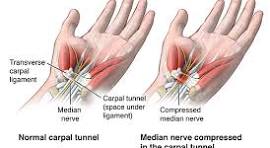INTRODUCTION:
Health is wealth—a simple yet profound truth. One sickness can drain a
lifetime of savings, leaving individuals and families in distress. While modern
medicine has made remarkable strides in diagnosing and treating diseases, many
health conditions continue to defy medical solutions, pushing us to explore
alternative approaches.
Natural remedies have been a cornerstone of healing for centuries, long before
the advent of modern pharmaceuticals. Across cultures and civilizations, people
have relied on nature’s gifts—herbs, roots, fruits, and holistic practices—to
restore health and vitality. While this encyclopedia does not seek to undermine
the importance of medical science, it aims to complement it by shedding light
on time-tested natural solutions. It encourages further research into the power of
nature in healing, offering insights into remedies that have provided relief to
countless individuals.
NATURAL REMEDIES FOR ARTHRITIS
Arthritis is a chronic condition marked by joint inflammation, pain, and
stiffness, often affecting mobility and overall quality of life. Although
there is no definitive cure for arthritis, a range of natural remedies may
help ease discomfort and improve joint function. These treatments
should be considered supportive strategies, not substitutes for medical
care. Each person’s experience with arthritis is different, so it is
important to discuss any new remedy with a qualified healthcare
provider before beginning.
1. Turmeric:
How it works: The active compound in turmeric, curcumin, has
well-documented anti-inflammatory and antioxidant properties.
Studies show that it may reduce joint swelling and stiffness,
particularly in osteoarthritis and rheumatoid arthritis.
Preparation: Mix 1–2 teaspoons of turmeric powder into warm
water or milk. You can also incorporate it into meals. For targeted
relief, make a paste with turmeric and water and apply it to
inflamed joints.
Usage: Consume the drink daily. Use the topical paste as needed.
Turmeric supplements are also available in capsule form.
2. Ginger:
How it works: Ginger contains gingerol and other anti-
inflammatory compounds that can reduce arthritis-related pain
and swelling by inhibiting pro-inflammatory pathways.
Preparation: Slice fresh ginger and steep in hot water for 10–15
minutes to make tea. You can also add fresh or powdered ginger
to food.
Usage: Drink ginger tea 2–3 times daily. Ginger capsules are
another option for consistent dosage.
3. Epsom Salt:
How it works: Epsom salt (magnesium sulfate) is absorbed
through the skin during baths, helping to relax muscles, reduce
inflammation, and ease joint pain.
Preparation: Add 2 cups of Epsom salt to a warm bath.
Usage: Soak for 20–30 minutes, up to three times per week,
depending on symptom severity.
4. Fish Oil:
How it works: Omega-3 fatty acids in fish oil help combat
inflammation at the cellular level, improving stiffness and
reducing joint tenderness, especially in autoimmune arthritis.
Preparation: Available as softgel capsules or liquid. Follow the
dosage on the product label or doctor’s prescription.
Usage: Take daily for long-term joint support and inflammation
control.
5. Heat and Cold Therapy:
How it works: Heat therapy promotes blood flow and muscle
relaxation, while cold therapy constricts blood vessels and
reduces inflammation, swelling, and acute pain.
Usage: Apply a warm compress or heating pad for 15–20
minutes. Alternate with an ice pack wrapped in cloth for 10–15
minutes. Repeat as needed throughout the day.
6. Boswellia Serrata:
How it works: Boswellia, or Indian frankincense, contains
boswellic acids that block leukotrienes, inflammatory molecules
involved in arthritis.
Preparation: Found in capsules or tablets, often labeled as
Boswellia extract.
Usage: Take as per product instructions, ideally under
supervision of a healthcare provider for proper dosing and
monitoring.
7. Acupuncture:
How it works: By stimulating specific energy points,
acupuncture may help regulate pain pathways and reduce joint
inflammation. It is particularly useful for chronic pain
management in osteoarthritis.
Usage: Schedule sessions with a licensed acupuncture
practitioner. A series of treatments may be needed before
noticeable improvement.
8. Weight Management:
How it works: Excess weight puts pressure on joints, especially
knees, hips, and lower back, exacerbating arthritis symptoms.
Maintaining a healthy weight can significantly relieve joint stress.
Usage: Adopt a balanced diet rich in fruits, vegetables, lean
protein, and whole grains, combined with low-impact exercises
such as swimming or walking.
Key Consideration
While natural remedies like turmeric, ginger, and fish oil may offer
notable relief for arthritis patients, their effectiveness varies from
person to person and often takes time to manifest. More importantly,
these treatments should not be used in place of prescribed medications,
especially in cases of rheumatoid or autoimmune arthritis, where
delayed treatment can lead to joint deformity and disability. Consulting
a rheumatologist or general physician before integrating herbal or
dietary supplements is essential, as some may interact with common
arthritis medications like NSAIDs, corticosteroids, or DMARDs. A
holistic approach that includes medical management, physical therapy,
stress reduction, and proper nutrition remains the best path forward in
managing arthritis symptoms and preserving joint health.



